Chlorcyclizine hydrochloride
Synonym(s):1-[(4-Chlorophenyl)phenylmethyl]-4-methylpiperazine monohydrochloride
- CAS NO.:14362-31-3
- Empirical Formula: C18H22Cl2N2
- Molecular Weight: 337.29
- MDL number: MFCD00035329
- EINECS: 238-335-1
- SAFETY DATA SHEET (SDS)
- Update Date: 2024-09-05 10:01:05
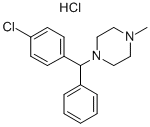
What is Chlorcyclizine hydrochloride?
The Uses of Chlorcyclizine hydrochloride
An antihistaminic drug
Biological Activity
chlorcyclizine is a phenylpiperazine antagonist for histamine h1 receptor [1].the histamine has been involved in modulating many physiological functions of the hypothalamus, such as arousal state, feeding, locomotor activity, and drinking. histamine has been involved in circadian rhythm of locomotor activity and exploratory behavior through h1r [1].
Safety Profile
Poison by ingestion, subcutaneous, intravenous, and intraperitoneal routes. An experimental teratogen. Other experimental reproductive effects. When heated to decomposition it emits very toxic fumes of HCl and NOx.
in vitro
the ki value of chlorcyclizine for histamine h1 receptor was 9 nm [1]. chlorcyclizin was effective against hepatitis c virus (hcv) with an ec50 of 44 nm, preventing viral entry into host cells [2].
in vivo
in chimeric mice xenografted with primary human hepatocytes, chlorcyclizine (10-50 mg/kg) significantly inhibited infection of hcv genotypes 1b and 2a [2]. chlorcyclizine induced a resistance to sodium pentobarbital anesthesia. intraperitoneal injection of chlorcyclizine showed a sedative effect in small doses, but a convulsive effect in large doses. intraperitoneal injections of the drug did not affect the recovery time from pentobarbital anesthesia [3]. in rats, pretreatment with chlorcyclizine for several days shortened the duration of action of a subsequent dose of hexobarbital, pentobarbital or zoxazolamine, and accelerated in vivo metabolism of hexobarbital [4]. the administration of chlorcyclizine (50 g/kg) to rats by stomach tube daily for 1 week resulted in significant increases in liver weight, microsomal protein concentration and the activity of the nadph-dependent hepatic microsomal ethanol-oxidizing system (meos) [5].
References
[1] tran v t, chang r s, snyder s h. histamine h1 receptors identified in mammalian brain membranes with [3h] mepyramine[j]. proceedings of the national academy of sciences, 1978, 75(12): 6290-6294.
[2] he, s. ,xiao, j.,dulcey, a.e., et al. discovery, optimization, and characterization of novel chlorcyclizine derivatives for the treatment of hepatitis c virus infection. journal of medicinal chemistry 59(3), 841-853 (2016).
[3] thompson i d, dolowy w c, cole w h. development of a resistance to sodium pentobarbital in rats fed on a diet containing chlorcyclizine hydrochloride[j]. journal of pharmacology and experimental therapeutics, 1959, 127(2): 164-166.
[4] conney a h, burns j j, michaelson i a. stimulatory effect of chlorcyclizine on barbiturate metabolism[j]. journal of pharmacology and experimental therapeutics, 1961, 132(2): 202-206.
[5] khanna j m, kalant h, lin g. significance in vivo of the increase in micro-somal ethanol-oxidizing system after chronic administration of ethanol, pheno-barbital and chlorcyclizine[j]. biochemical pharmacology, 1972, 21(16): 2215-2226.
Properties of Chlorcyclizine hydrochloride
| Melting point: | 226-227 °C |
| storage temp. | Store at -20°C |
| solubility | ≥11 mg/mL in DMSO with gentle warming; ≥14.7 mg/mL in EtOH; ≥9.44 mg/mL in H2O with ultrasonic |
| form | neat |
| form | Solid |
| color | White to off-white |
Safety information for Chlorcyclizine hydrochloride
| Signal word | Danger |
| Pictogram(s) |
 Skull and Crossbones Acute Toxicity GHS06 |
| GHS Hazard Statements |
H301:Acute toxicity,oral H315:Skin corrosion/irritation H319:Serious eye damage/eye irritation H335:Specific target organ toxicity, single exposure;Respiratory tract irritation |
| Precautionary Statement Codes |
P302+P352:IF ON SKIN: wash with plenty of soap and water. P305+P351+P338:IF IN EYES: Rinse cautiously with water for several minutes. Remove contact lenses, if present and easy to do. Continuerinsing. |
Computed Descriptors for Chlorcyclizine hydrochloride
Abamectin manufacturer
New Products
4-AMINO-TETRAHYDRO-PYRAN-4-CARBOXYLIC ACID HCL 4-(Dimethylamino)tetrahydro-2H-pyran-4-carbonitrile 4-Aminotetrahydropyran-4-carbonitrile Hydrochloride (R)-3-Aminobutanenitrile Hydrochloride 3-((Dimethylamino)methyl)-5-methylhexan-2-one oxalate 1,4-Dioxa-8-azaspiro[4.5]decane 5-Bromo-2-nitropyridine Nimesulide BP Aceclofenac IP/BP/EP Diclofenac Sodium IP/BP/EP/USP Mefenamic Acid IP/BP/EP/USP Ornidazole IP Diclofenac Potassium THOMAIND PAPER PH 2.0 TO 4.5 1 BOX BUFFER CAPSULE PH 9.2 - 10 CAP SODIUM CHLORIDE 0.1N CVS ALLOXAN MONOHYDRATE 98% PLATINUM 0.5% ON 3 MM ALUMINA PELLETS (TYPE 73) LITHIUM AAS SOLUTION 2-Bromo-1-(bromomethyl)-3-chloro-5-nitrobenzene 2-Bromo-3-nitroaniline N-(3-Hydroxypropyl)-N-methylacetamide 3-Bromo-6-chloropyridazine 4-ethyl-3-nitrobenzoic acidRelated products of tetrahydrofuran
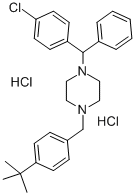

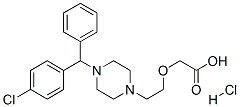

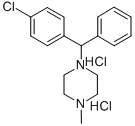

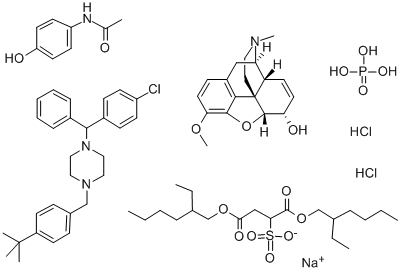
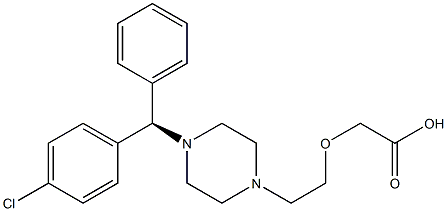
You may like
-
 CHLORCYCLIZINE HCL 95-99%View Details
CHLORCYCLIZINE HCL 95-99%View Details
14362-31-3 -
 Chlorcyclizine hydrochloride CAS 14362-31-3View Details
Chlorcyclizine hydrochloride CAS 14362-31-3View Details
14362-31-3 -
 1-(4-CHLORODIPHENYLMETHYL)-4-METHYLPIPERAZINE HYDROCHLORIDE CAS 14362-31-3View Details
1-(4-CHLORODIPHENYLMETHYL)-4-METHYLPIPERAZINE HYDROCHLORIDE CAS 14362-31-3View Details
14362-31-3 -
 1823368-42-8 98%View Details
1823368-42-8 98%View Details
1823368-42-8 -
 2-(3-(tert-butyl)phenoxy)-2-methylpropanoic acid 1307449-08-6 98%View Details
2-(3-(tert-butyl)phenoxy)-2-methylpropanoic acid 1307449-08-6 98%View Details
1307449-08-6 -
 Ethyl 3-(furan-2-yl)-3-hydroxypropanoate 25408-95-1 98%View Details
Ethyl 3-(furan-2-yl)-3-hydroxypropanoate 25408-95-1 98%View Details
25408-95-1 -
 2-Chloro-5-fluoro-1-methoxy-3-methylbenzene 98%View Details
2-Chloro-5-fluoro-1-methoxy-3-methylbenzene 98%View Details
1805639-70-6 -
 Lithium ClavulanateView Details
Lithium ClavulanateView Details
61177-44-4